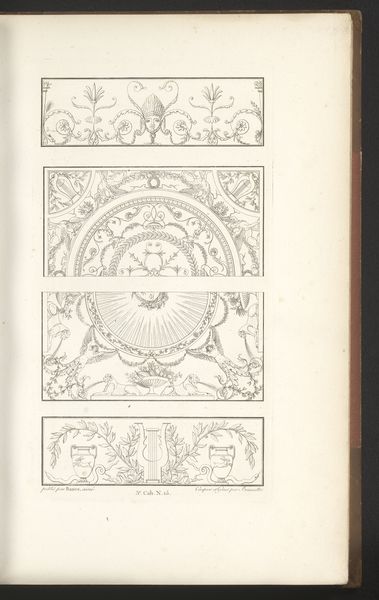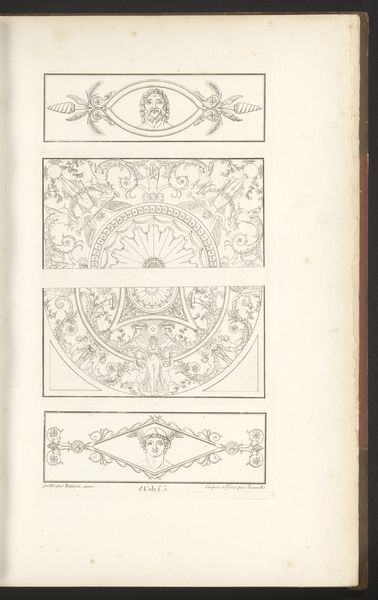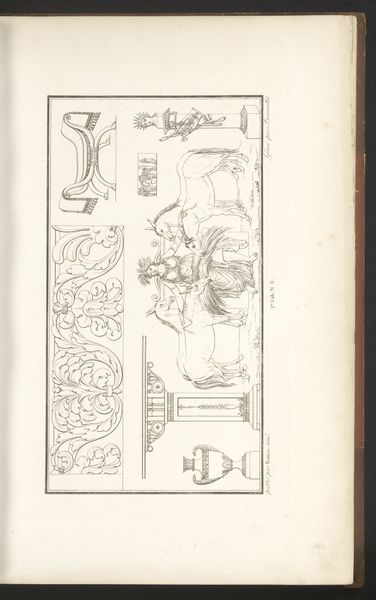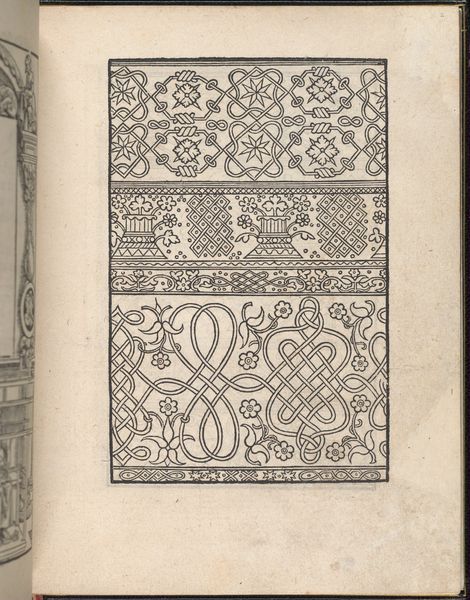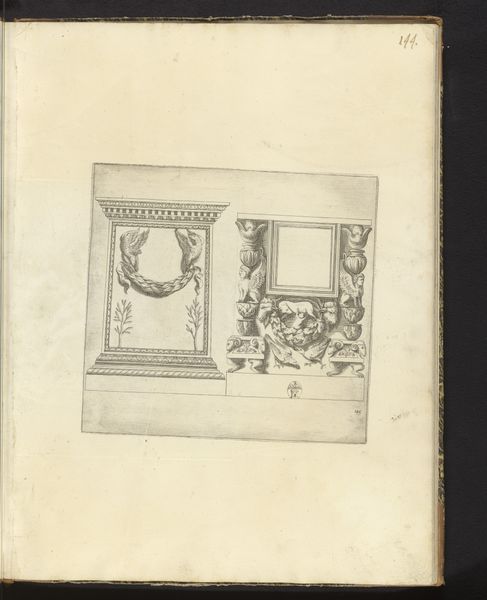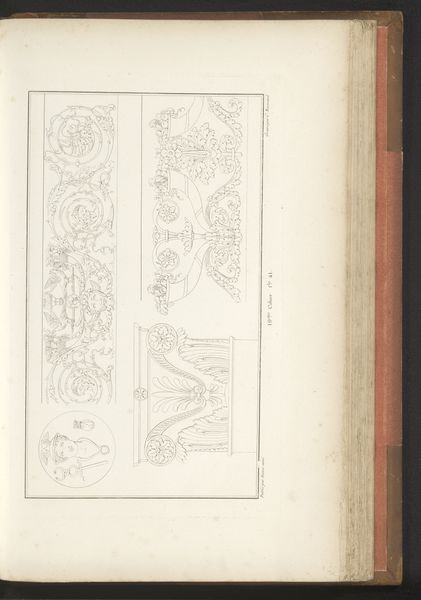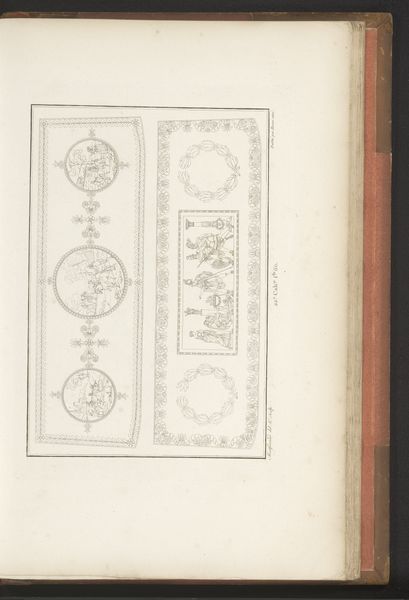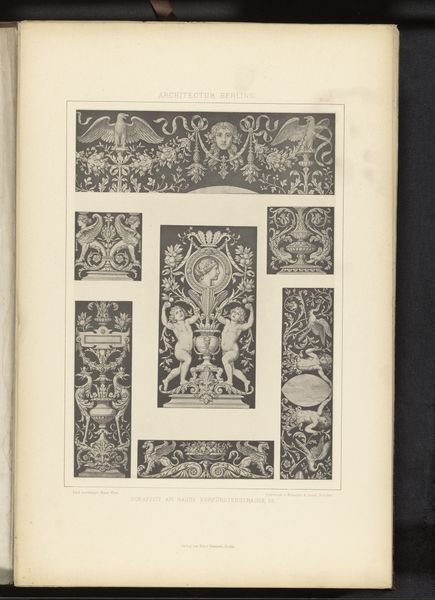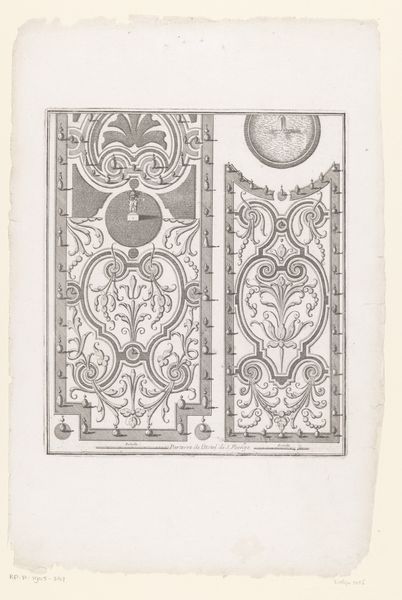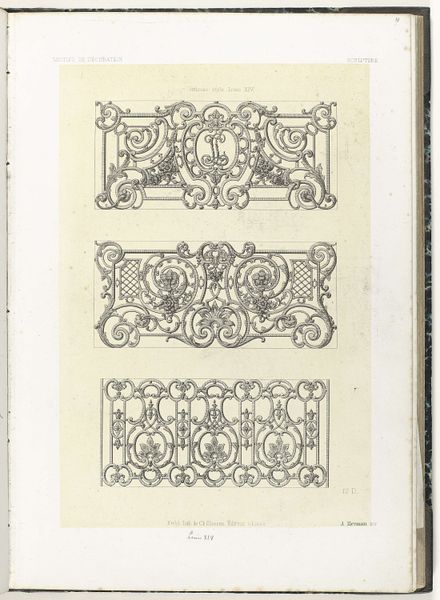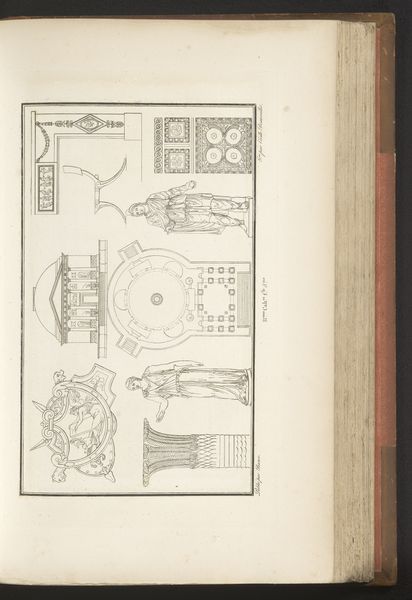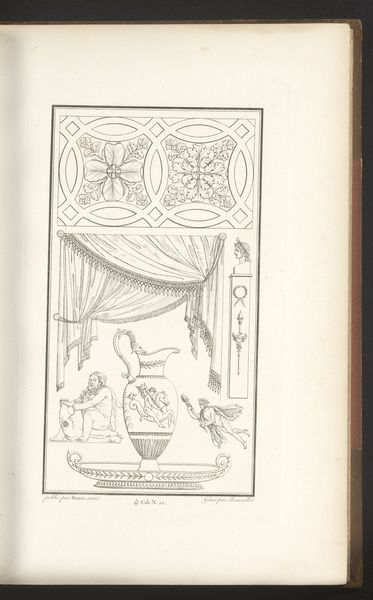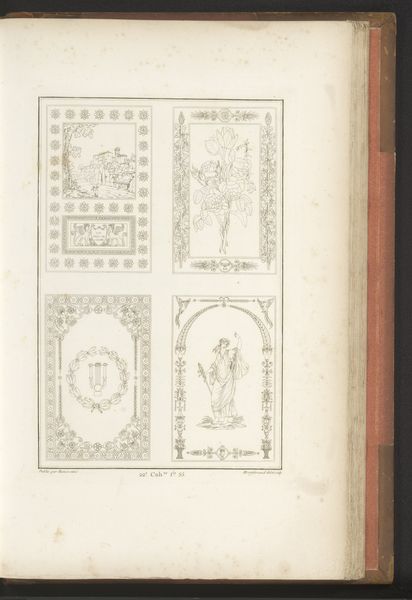
drawing, ornament, paper, ink, engraving
#
drawing
#
neoclacissism
#
ornament
#
paper
#
ink
#
geometric
#
pen-ink sketch
#
line
#
decorative-art
#
engraving
Dimensions: height mm, width mm
Copyright: Rijks Museum: Open Domain
Curator: These drawings offer a glimpse into interior design from the 1820s. Executed in ink on paper by Pierre-Nicolas Beauvallet, these are entitled "Vier plafond- en wandversieringen", which translates to "Four ceiling and wall decorations". They were intended as engraving templates. Editor: There's such restrained elegance in the linear detail; they evoke a sense of stately homes and refined society, although, something about the repetition also strikes me as being quite impersonal and perhaps oppressive? Curator: Interesting that you find them impersonal. For me, the repeating motifs solidify a certain set of beliefs about empire and nobility. Look, for example, at how recurring figures are employed, consider the persistent emphasis on geometric precision, as if striving to create a perfect order. This echoes similar trends within art and governance. Editor: That's a compelling reading of the order. It’s hard not to reflect on the inherent contradictions within the decorative arts of this era. On one hand you have the striving towards the “ideal” beauty as found in neoclassicism, on the other there is a deliberate obscuring of what made those original artifacts and that earlier society thrive – labor, class, and race hierarchies all erased by a decorative overlay. Curator: Precisely. Symbols of power were designed for lasting impact, acting as vessels containing and communicating dominant ideology throughout the ages, but what remains striking is the emotional durability of these archetypes and visual tropes. Take, for instance, the constant incorporation of the mythical griffin, half lion, half eagle. Consider what cultural baggage these symbols carried then and now! Editor: Yes! How is this visual language weaponized over the years by various regimes? By exploring these designs with a contemporary understanding of history and class, perhaps, we begin to realize their continued effects on societal standards. Curator: Definitely, the echo continues and shapes much more than surface aesthetics. It influences our concept of history. I feel invigorated now. Editor: I agree, by revealing social forces at play, this decorative page does way more than meets the eye.
Comments
No comments
Be the first to comment and join the conversation on the ultimate creative platform.
